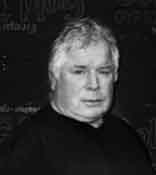Trees & Shrubs
2009-11-01 15:55:00
Planting large trees - series
Answer: Huge trees must be transplanted by professionals. However moderate size ones up to 2 in. in diameter, can be tackled successfully, but it is a lot of work, and not always recommended.
Getting Started
When you buy new trees, get some help in measuring the root ball before you leave. You’ll need these dimensions to dig the hole. Because the ball may be mounded with mulch at the nursery, this is not always as easy as it sounds. In our case, the ball measured nearly 48 in. across and was an estimated 27 in. tall. This meant digging a hole in our yard at least 52 in. wide and roughly 24 in. deep. It’s a good idea to leave the hole a little shallow until the tree is on site and you can get a more exact measurement.
When you’ve determined the best location for your new tree, skim the sod from the area and set the pieces aside on a plastic tarp. Then, begin digging, trying to keep the sides straight and the bottom of the hole level. When you feel you’re close, stop and measure. The critical measurement here is depth. Be careful not to over-excavate. A tree should always rest on solid soil, never on backfilled soil.
Trees that are large are usually delivered on flatbed trailers or trucks, and usually come with help and professionals. The hard work, naturally, is in moving a 1200-pound tree across the yard.
Size And Season
Spring and fall are the best times to transplant trees. In both cases, the goal is to avoid temperature extremes during those first critical weeks. Trees planted in the heat of summer, in contrast, use most of their energy fighting heat stress.
The mistake many people make is planting too close to the house or other permanent features, such as driveways. For example, pine trees can grow 40 ft. tall and its branches can reach 30 ft. across, so plugging it in 15 ft. from the house is not a great idea. Twenty ft. is more like it and 30 ft. is usually better.
Site Selection
There are great differences in the environmental requirements for each tree and shrub species. Only transplant a tree or shrub where light, moisture, soil pH, and wind exposure are appropriate for the particular species. All plants require space for root and crown development; therefore, consider mature plant size when planting trees and shrubs.
Soil characteristics are often limiting factors for woody plant survival in a given area. Sometimes the soil is inappropriate for tree growth and will require improved drainage or amendments before trees and/or shrubs are planted at the given location. A soil test should be completed in areas where soil quality is questionable. For more information on soils in rural areas, contact your nearest Natural Resource Conservation Service office.
If you’ve been thinking of planting a large tree but your yard won’t accommodate a truck-mounted tree spade, don’t despair. You’ll be happy to know that quite large trees can be planted by hand. Granted, you’ll need a few extra hands, and you’ll need the tree delivered and dropped, but the rest of the job is pretty basic.
The trees we’re talking about are ball-and-burlap trees, up to 2 in. in diameter, as measured 1 ft. above grade. Anything larger is just too heavy, too unwieldy and too well established to survive the shock of this type of transplant. A 3- to 4-in. tree, on the other hand, offers good survivability and a five-to-six-year jump on saplings.
We will continue next month with the techniques for transplanting large trees...
Dick Robertson has been in South Central Kansas since 1965, and has been apart of planting/transplanting trees for nearly 30 years. Mr. Robertson can be reached at 209-7990 or by e-mail at coachdick@hotmail.com


